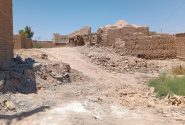When regular steam ferry service between Brooklyn and Manhattan began in1814, the first commuter suburb became possible.1 Suburbs continued to develop slowly but steadily during the 19th and early 20th centuries, thanks to transportation advances such as commuter trains and streetcars, the innovations of early real estate developers, and the urge to live in pastoral tranquility rather than in urban squalor. As automobile ownership became wide spread starting in the 1920s, suburban growth continued, a trend that accelerated greatly during the second half of the 20th century. One in two Americans now lives in the suburbs.2In recent years, the rapid expansion of metropolitan areas has been termed“urban sprawl”—referring to a complex pattern of land use, transportation,and social and economic development. As cities extend into rural areas, large tracts of land are developed in a “leapfrog,”low-density pattern. Different land uses—housing, retail stores, offices, industry, recreational facilities, and public spaces such a sparks—are kept separate from each other,with the separation enforced by both custom and zoning laws. Extensive roads need to be constructed; for suburban dwellers,most trips, even to buy a newspaper or a quart of milk, require driving a car. Newly built suburbs are relatively homogeneous in both human and architectural terms, com-pared with the diversity found in traditional urban or small town settings. With the expansion of suburbs, capital investment and economic opportunity shift from the center to the periphery. Regional planning and co-ordination are relatively weak.1,3–۷Clearly, the move to the suburbs reflects a life style preference shared by many Americans. Such a major shift in the nation’s demographics and in the form of our environment might also be expected to have health implications, both positive and negative. Some of these effects relate directly to heavy reliance on automobiles: air pollution, automobile crashes, and pedestrian injuries and fatalities. Other effects relate to land use patterns that typify sprawl: sedentary lifestyles, threats to water quantity and quality, and an expansion of the urban heat island effect. Finally, some mental health and social capital effects are mediated by the social dimensions of sprawl.Many of these health effects are individually recognized as environmental health issues, and certain aspects of sprawl, such as reliance on automobiles, have been analyzed as public health issues.8,9 Yet the broad phenomenon of sprawl, a complex of issues related to land use, transportation, urban and regional design,and planning, has been the intellectual “property” of engineers and planners. Public health professional shave provided neither an intellectual framework nor policy guidance. This is a striking departure from the legacy of the 19th and early 20th centuries, when public health and urban design were overlapping and largely indistinguishable concerns.
This article offers a public health framework for understanding the consequences of urban sprawl. For each of the health outcomes noted earlier, available evidence about the health effect and its connection with sprawl is presented, and issues that require further research are identified. Because the adverse impacts of sprawl do not fall equally across the population, the distribution of health impacts across the population and resulting equity concerns are ad-dressed. Finally, some solutions are discussed. The full file of this article can be downloaded for free























